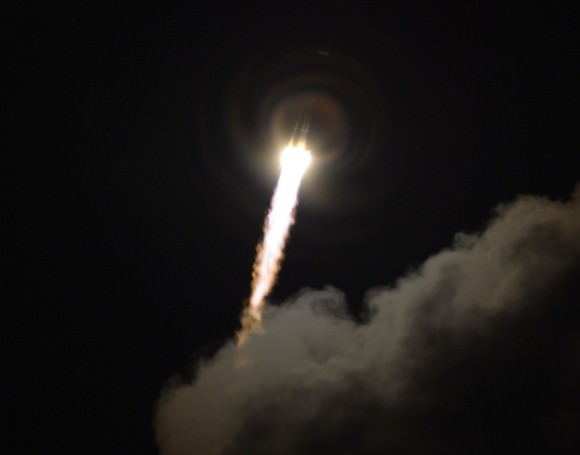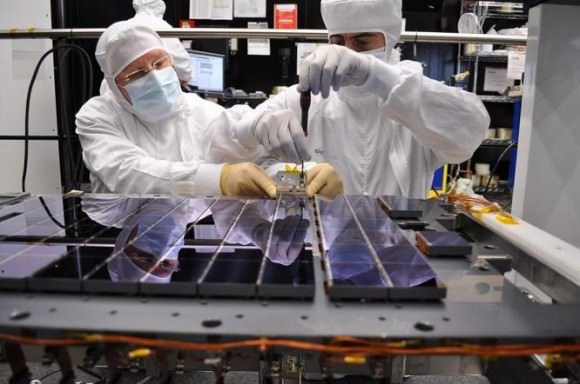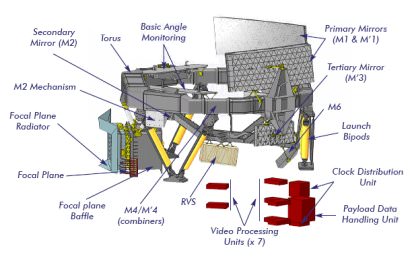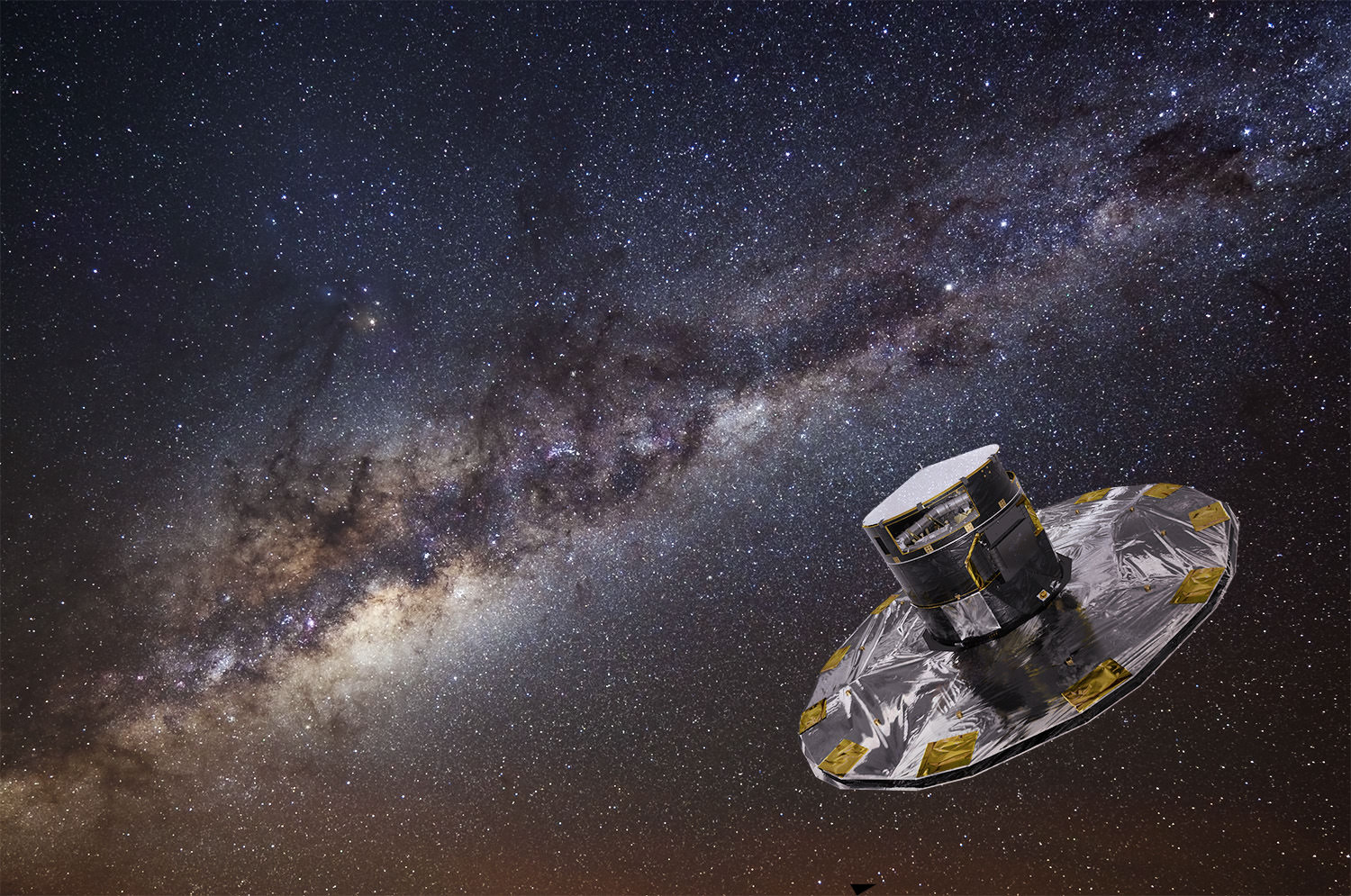Europe’s powerful Milky Way mapper is facing some problems as controllers ready the Gaia telescope for operations. It turns out that there is “stray light” bleeding into the telescope, which will affect how well it can see the stars around it. Also, the telescope optics are also not transmitting as efficiently as the design predicted.
Controllers emphasize the light problem would only affect the faintest visible stars, and that tests are ongoing to minimize the impact on the mission. Still, there will be some effect on how well Gaia can map the stars around it due to this issue.
“While there will likely be some loss relative to Gaia’s pre-launch performance predictions, we already know that the scientific return from the mission will still be immense, revolutionizing our understanding of the formation and evolution of our Milky Way galaxy and much else,” wrote the Gaia project team in a blog post.
Both of these problems have been known publicly since April, and the team has been working hard in recent months to pinpoint the cause. Of the two of them, it appears the team is having the most success with the optics transmission problems. They have traced the issue to water vapor in the telescope that freezes (no surprise since Gaia operates between -100 degrees Celsius and -150 Celsius, or -148 Fahrenheit and -238 Fahrenheit.)

The team turned on heaters on Gaia (on its mirrors and focal plane) to get rid of the ice before turning the temperature back down so the telescope can do its work. While some ice was anticipated (that’s why the heaters were there) there was more than expected. The spacecraft is also expected to equalize its internal pressure over time, sending out gases that again, could freeze and cause interference, so more of these “decontamination” procedures are expected.
The stray light problem is proving to be more stubborn. The light waves from sunlight and brighter sources of light in the sky are likely moving around the sunshield and bleeding into the telescope optics, which was unexpected (but the team is now trying to model and explain.)
Perhaps it was more ice. The challenge is, there were no heaters placed into the thermal tent area that could be responsible for the issue, so the team at first considered moving the position of Gaia to have sunlight strike that area and melt the ice.

Simulations showed no safety problems with the idea, but “there is currently no plan to do so,” the team wrote. That’s because some tests on ground equipment in European laboratories didn’t show any strong evidence for or against layers of ice interfering with the stray light. So there didn’t seem to be much point to doing the procedure.
So instead, the idea is to do “modified observing strategies” to collect the data and then tweaking the software on the spacecraft and on the ground to “best optimize the data we will collect,” Gaia managers wrote.
“The stray light is variable across Gaia’s focal plane and variable with time, and has a different effect on each of Gaia’s science instruments and the corresponding science goals. Thus, it is not easy to characterise its impact in a simple way,” they added. They predict, however, that a star at magnitude 20 (the limit of Gaia’s powers) would see its positional accuracy mapping reduced by about 50%, while stars that are brighter would have less impact.

“It is important to realize that for many of Gaia’s science goals, it is these relatively brighter stars and their much higher accuracy positions that are critical, and so it is good to see that they are essentially unaffected. Also, the total number of stars detected and measured will remain unchanged,” the managers added.
The team is also tracking a smaller issue with a system that is supposed to measure the angle of separation between the two telescopes of Gaia. It’s needed to measure how small changes in temperature affect the angle between the telescopes. While the system is just fine, the angle is varying more than expected, and more work will be needed to figure out what to do next.
But nevertheless, Gaia is just about ready to start a science session that will last about a month. The team expects to have a better handle on what the telescope is capable of, and how to work with these issues, after that time. Gaia operates about 1.5 million km (932,000 miles) away from Earth in a gravitationally stable point in space known as L2, so it’s a bit too far for a house call such as what we were used to with the Hubble Space Telescope.
Source: European Space Agency

